
Beta tests are a cornerstone of software development.
They’re those tests that you run on software before releasing it to the public so that you can catch bugs and other issues which are likely to cause problems if left undetected.
In this article, however, we’ll focus specifically on technical and marketing beta tests.
We’ll discuss the difference between these two types, and explain why you might want to run both.
So let’s get started!
Table of Contents
What is a technical beta test
A technical beta is the type of testing our mind usually goes to when we hear the term beta test.
It involves real testers being invited to use an early version of a product to find bugs, crashes, and glitches.
This is the point at which the product is still rough around the edges, so it’s important to make sure everything works as it should.
In a nutshell, the purpose of technical beta testing is to help developers:
- debug software
- identify issues with stability
- improve performance
- inspect security
- test functionality across different operating systems
Keep in mind that technical betas usually accompany major releases or updates, not minor ones such as patches.
The reason for this is that they’re often complex and require a lot of time to test, so they’re usually reserved for bigger releases.
For example, Instagram is currently beta-testing the Repost button, and below you can see what an intro screen for the feature might look like in the future.
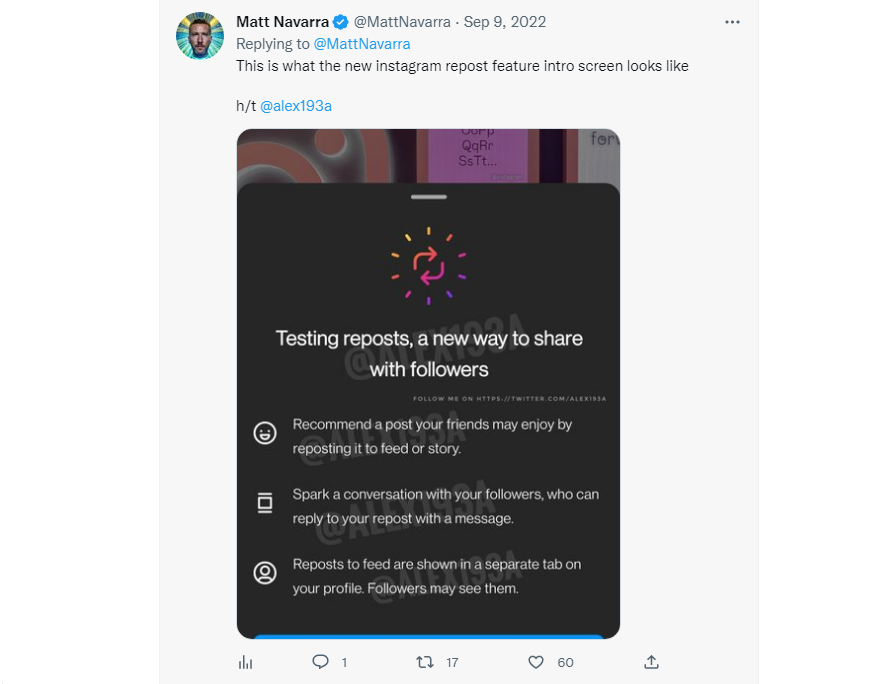
This is a major addition to the app, so it requires extensive testing of performance and functionality before being rolled out to everyone.
If Instagram released the feature without testing it first and the users found it lacking in any way (which would be highly likely), the backlash would be severe.

Get unreal data to fix real issues in your app & web.
It’s, therefore, clear that technical beta testing is a great way to ensure that the product is stable and reliable and doesn’t have any major issues before being rolled out to the public.
That makes it an indispensable part of the development process and a critical step in every software release.
What is a marketing beta test
Unlike technical beta tests, marketing beta is designed to test a product’s overall marketability and appeal.
In that sense, it’s a form of market research.
You can use it to see how well the product is received by potential users, gauge their overall satisfaction with it, gain valuable feedback on ways in which you can improve it, and even create a buzz around it before the official release.
For example, it can help you attract two key groups of users—early adopters and evangelists.
Early adopters are the first people who will try your product.
And according to brand consultant Mikal E. Belicove, if they like what they see, they’ll promote it to others.
Not only can they help suggest improvements and features, they’re often the first ones to generate excitement about your launch.
In other words, they can turn into evangelists for your product, promoting it in their social circles and generating interest in its value.
Considering that word of mouth is one of the most effective forms of creating brand awareness, it’s safe to say that early adopters are incredibly valuable to have on your side.
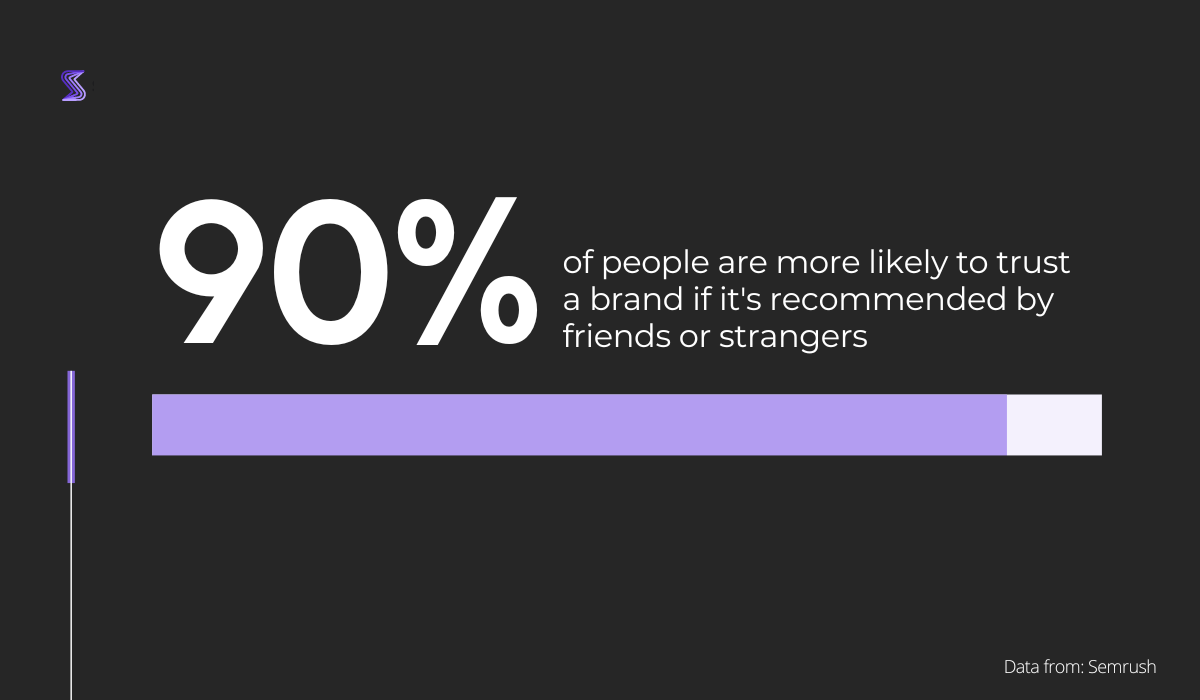
Furthermore, you can use the marketing beta to collect reviews and testimonials that’ll boost the product’s success when it goes live.
As you may already know from your own experience, for consumers, reviews are one of the first considerations before deciding on a product, so building that reputation early on can be important for acquiring new users.
For instance, if you have at least one positive review in app stores or Capterra at the time of the official launch (such as the one below), other users will feel more confident in their decision to download or purchase it.
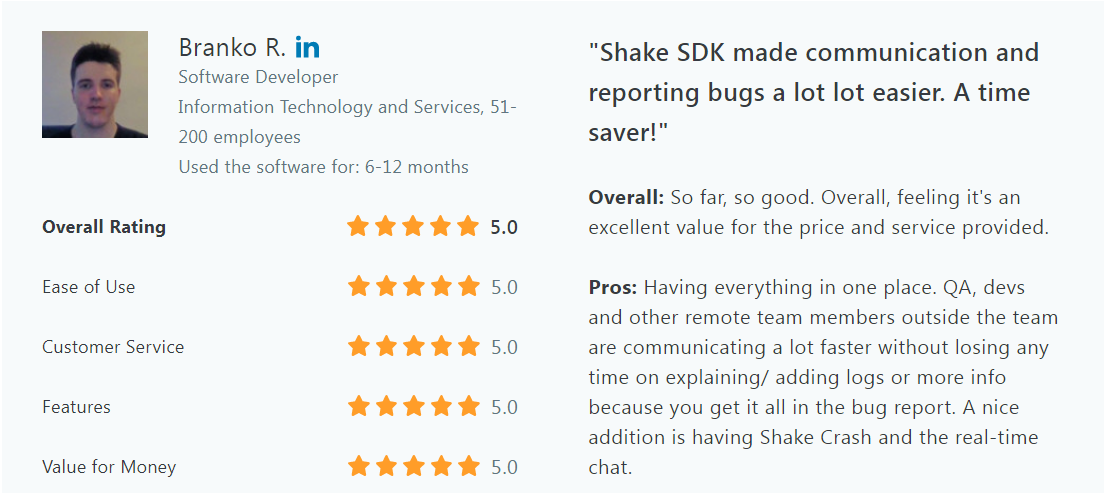
But if they see none or very few reviews, they might think your product is not worth their time or money.
However, there’s more to marketing beta testing than just getting feedback and attracting users.
Collecting qualitative data can help you better understand your target market, which in turn boosts your marketing efforts later down the line.
You can find out about the users’ preferences for certain features, their pain points, and what they love about the product, which is important for building a strong brand identity and positioning the product in the market.
All in all, marketing beta testing is a serious undertaking that can offer substantial benefits for any business, helping them improve their marketing efforts and launch successful products.
Technical beta test vs. marketing beta test: key differences
Technical and marketing beta testing are similar in many ways, but they also have their differences.
For starters, technical beta is focused on improving performance and making the product more stable, secure, and efficient.
It’s also about testing how easy it is for users to install, configure and use the product.
Marketing beta testing, on the other hand, focuses on promotional activities such as messaging, positioning, and even user experience.
The goal is to make sure that the product and its marketing efforts are aligned.
As you can see, technical and marketing beta tests have different goals. They also differ in their approach to testing.
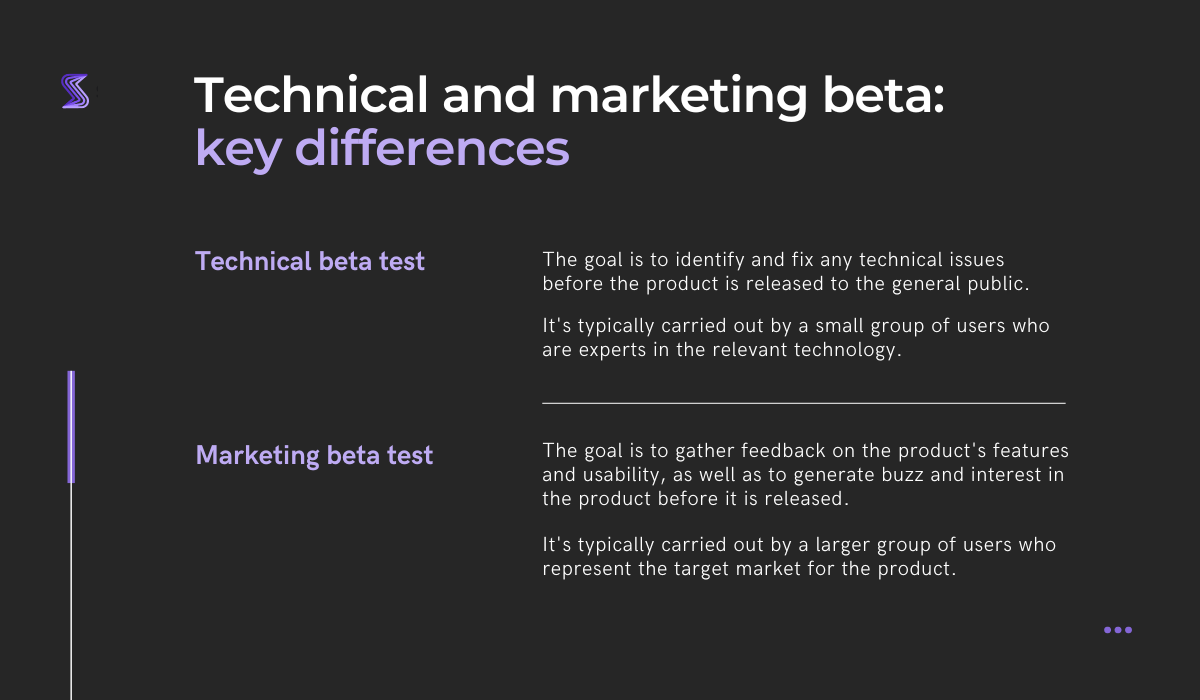
A technical beta usually involves a closed group of testers who are more tech-savvy and can give a more knowledgeable perspective on how the product performs.
To find such testers, companies often use websites like BetaTesting and UserTesting.
These sites provide access to a pool of testers who meet certain criteria, such as location, age, education, and tech experience level, allowing companies to find the right people for their testing needs.
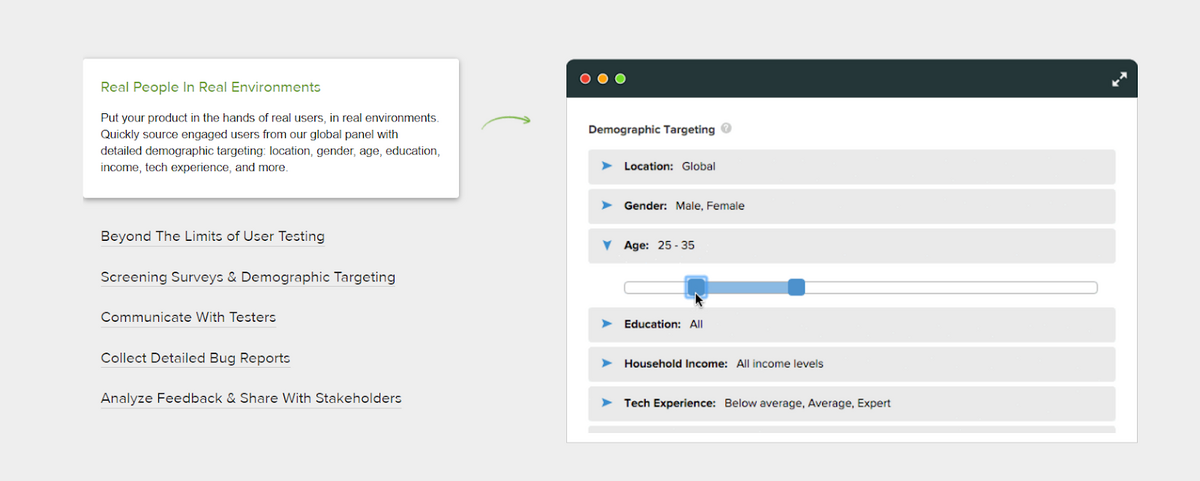
Invitations for marketing beta testing, on the other hand, are usually distributed through social media channels, like Facebook or Twitter (as in the picture below), or sometimes through forms on the company website where people can sign up to be included in the program.
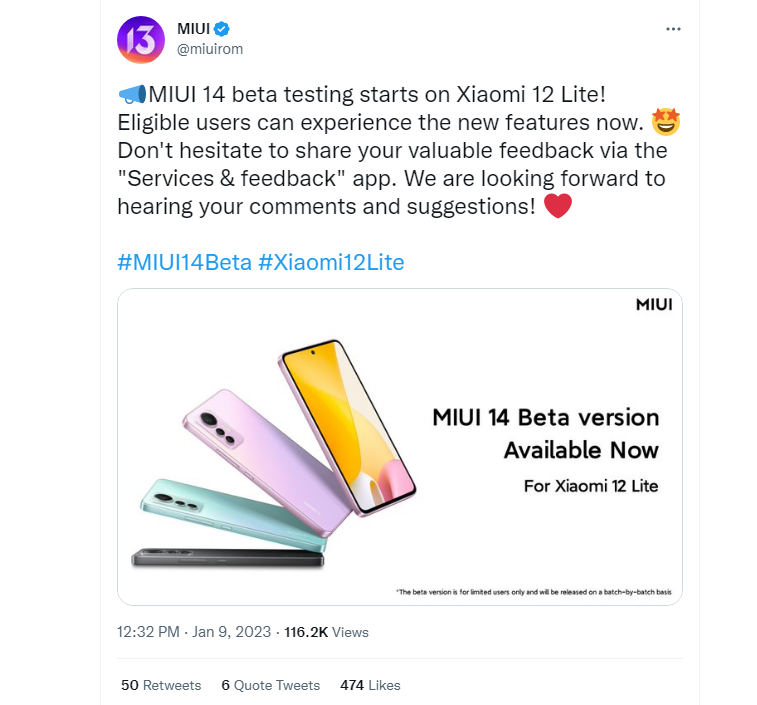
However, it must be noted that, while most marketing betas are open to the public, some companies choose not to make their betas widely available in order to create a sense of exclusivity.
This was the case with Pinterest’s invite-only system when the platform was first entering the market in 2010.
The platform only allowed a select few to join and then gradually opened up access to more users as it got closer to launch.

Such a strategy is great for creating hype around new products, since it helps them grow quickly after the release.
Although technical and marketing beta tests differ in many ways, both are important parts of the development process that can help create a better final product.
That’s why it’s important for companies to understand the difference between the two and learn how to leverage both.
Technical beta test vs. marketing beta test: do you need both
Many companies consider only the technical aspects of a product during beta testing, neglecting its marketing appeal.
A better option, though, is to get feedback on both sides of things.
For startups, marketing betas are a way to position their product and establish a user base through word of mouth provided by early adopters.
But even established brands benefit from including marketing betas in their testing strategies.
In a marketing beta test, you’re testing your value proposition, messaging, and the entire user experience, with real consumers who are actually paying attention to your product and reacting according to their impressions.
You can get feedback on what works and doesn’t work, not only in terms of performance but also in user satisfaction and experience.
Therefore, both types of tests are important because they enable companies to improve their products and determine whether or not they’re ready for wider public scrutiny.
Now that we got that covered, the question shifts to whether the two kinds of tests should be performed simultaneously or separately.
The best strategy is to segment the beta test into stages so that the technical and marketing goals aren’t don’t clash.
For example, you can start by dogfooding your product internally and then invite a small group of technical beta testers to help you identify major bugs.
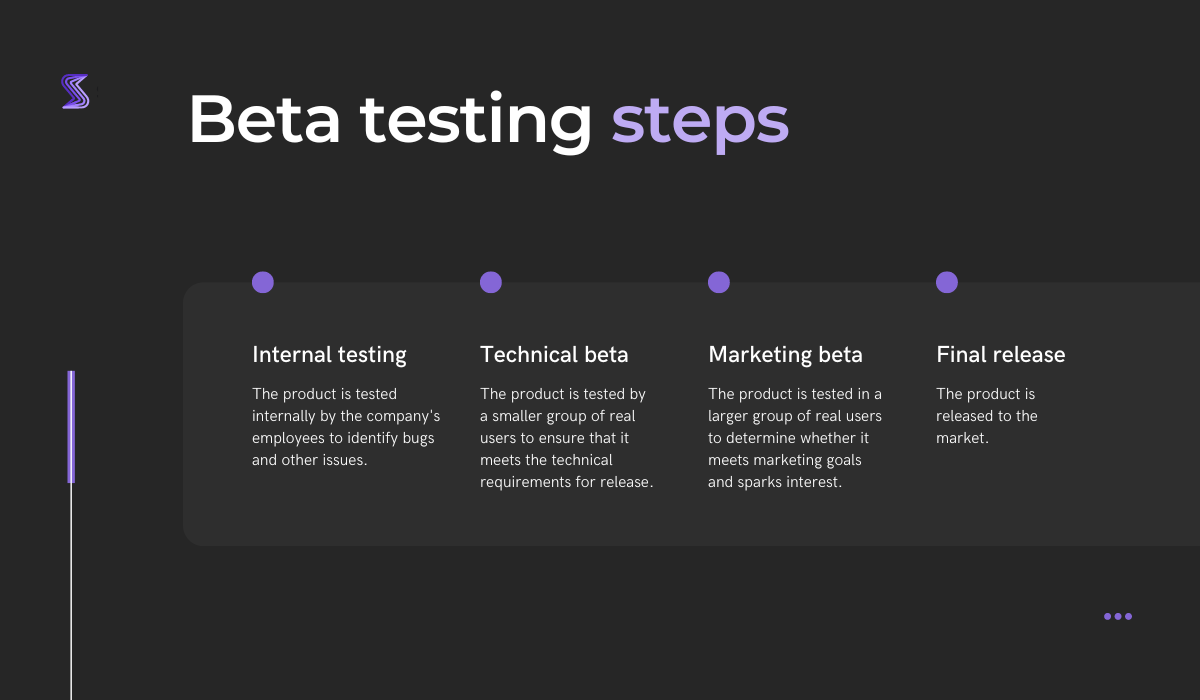
Once you minimize the number of bugs and collect feedback on how well the app performs on different kinds of devices and operating systems, you can make the beta version available to more people—and include marketing beta testing.
During this phase, you’ll want to test your marketing materials and tactics so that you can fine-tune them before going live with your product.
All things considered, having both technical and marketing beta tests in your arsenal will give you the best chance for a successful launch.
Conclusion
In this article, we’ve discussed the difference between technical and marketing beta tests.
We’ve also outlined what each type of test entails, as well as when to run them.
Remember, the more time you spend testing, analyzing, and improving your product, the better off you’ll be when the time comes to launch.
That’s why both technical and marketing beta tests should be an integral part of your every product development process.




